第24章
ART AND THE BRONCO
Out of the wilderness had come a painter.Genius, whose coronations alone are democratic, had woven a chaplet of chaparral for the brow of Lonny Briscoe.Art, whose divine expression flows impartially from the fingertips of a cowboy or a dilettante emperor, had chosen for a medium the Boy Artist of the San Saba.The outcome, seven feet by twelve of besmeared canvas, stood, gilt-framed, in the lobby of the Capitol.
The legislature was in session; the capital city of that great Western state was enjoying the season of activity and profit that the congregation of the solons bestowed.The boarding-houses were corralling the easy dollars of the gamesome law-makers.The greatest state in the West, an empire in area and resources, had arisen and repudiated the old libel or barbarism, lawbreaking, and bloodshed.
Order reigned within her borders.Life and property were as safe there, sir, as anywhere among the corrupt cities of the effete East.
Pillow-shams, churches, strawberry feasts and /habeas corpus/
flourished.With impunity might the tenderfoot ventilate his "stovepipe" or his theories of culture.The arts and sciences received nurture and subsidy.And, therefore, it behooved the legislature of this great state to make appropriation for the purchase of Lonny Briscoe's immortal painting.
Rarely has the San Saba country contributed to the spread of the fine arts.Its sons have excelled in the solider graces, in the throw of the lariat, the manipulation of the esteemed.45, the intrepidity of the one-card draw, and the nocturnal stimulation of towns from undue lethargy; but, hitherto, it had not been famed as a stronghold of aesthetics.Lonny Briscoe's brush had removed that disability.Here, among the limestone rocks, the succulent cactus, and the drought-
parched grass of that arid valley, had been born the Boy Artist.Why he came to woo art is beyond postulation.Beyond doubt, some spore of the afflatus must have sprung up within him in spite of the desert soil of San Saba.The tricksy spirit of creation must have incited him to attempted expression and then have sat hilarious among the white-
hot sands of the valley, watching its mischievous work.For Lonny's picture, viewed as a thing of art, was something to have driven away dull care from the bosoms of the critics.
The painting--one might almost say panorama--was designed to portray a typical Western scene, interest culminating in a central animal figure, that of a stampeding steer, life-size, wild-eyed, fiery, breaking away in a mad rush from the herd that, close-ridden by a typical cowpuncher, occupied a position somewhat in the right background of the picture.The landscape presented fitting and faithful accessories.Chaparral, mesquit, and pear were distributed in just proportions.A Spanish dagger-plant, with its waxen blossoms in a creamy aggregation as large as a water-bucket, contributed floral beauty and variety.The distance was undulating prairie, bisected by stretches of the intermittent streams peculiar to the region lined with the rich green of live-oak and water-elm.A richly mottled rattlesnake lay coiled beneath a pale green clump of prickly pear in the foreground.A third of the canvas was ultramarine and lake white--the typical Western sky and the flying clouds, rainless and feathery.
Between two plastered pillars in the commodious hallway near the door of the chamber of representatives stood the painting.Citizens and lawmakers passed there by twos and groups and sometimes crowds to gaze upon it.Many--perhaps a majority of them--had lived the prairie life and recalled easily the familiar scene.Old cattlemen stood, reminiscent and candidly pleased, chatting with brothers of former camps and trails of the days it brought back to mind.Art critics were few in the town, and there was heard none of that jargon of colour, perspective, and feeling such as the East loves to use as a curb and a rod to the pretensions of the artist.'Twas a great picture, most of them agreed, admiring the gilt frame--larger than any they had ever seen.
Senator Kinney was the picture's champion and sponsor.It was he who so often stepped forward and asserted, with the voice of a bronco-
buster, that it would be a lasting blot, sir, upon the name of this great state if it should decline to recognize in a proper manner the genius that had so brilliantly transferred to imperishable canvas a scene so typical of the great sources of our state's wealth and prosperity, land--and--er--live-stock.
Senator Kinney represented a section of the state in the extreme West --400 miles from the San Saba country--but the true lover of art is not limited by metes and bounds.Nor was Senator Mullens, representing the San Saba country, lukewarm in his belief that the state should purchase the painting of his constituent.He was advised that the San Saba country was unanimous in its admiration of the great painting by one of its own denizens.Hundreds of connoisseurs had straddled their broncos and ridden miles to view it before its removal to the capital.
Senator Mullens desired reelection, and he knew the importance of the San Saba vote.He also knew that with the help of Senator Kinney--who was a power in the legislature--the thing could be put through.Now, Senator Kinney had an irrigation bill that he wanted passed for the benefit of his own section, and he knew Senator Mullens could render him valuable aid and information, the San Saba country already enjoying the benefits of similar legislation.With these interests happily dovetailed, wonder at the sudden interest in art at the state capital must, necessarily, be small.Few artists have uncovered their first picture to the world under happier auspices than did Lonny Briscoe.
Senators Kinney and Mullens came to an understanding in the matter of irrigation and art while partaking of long drinks in the cafe of the Empire Hotel.